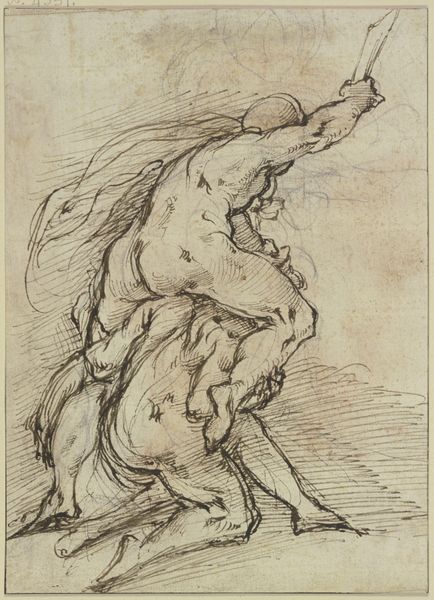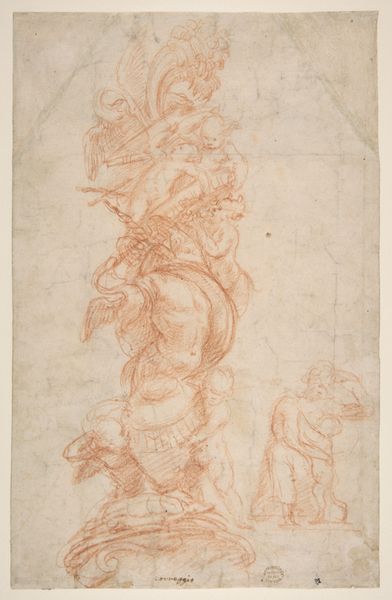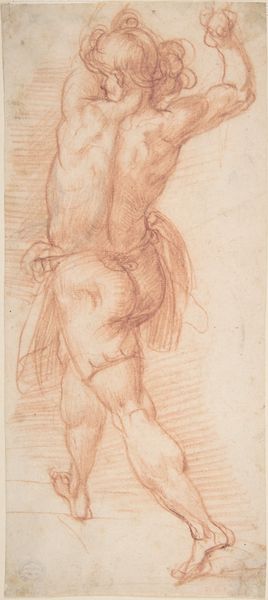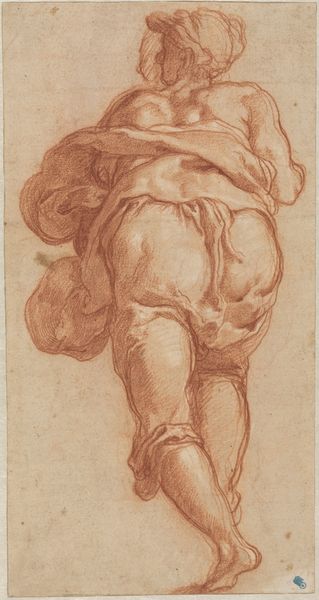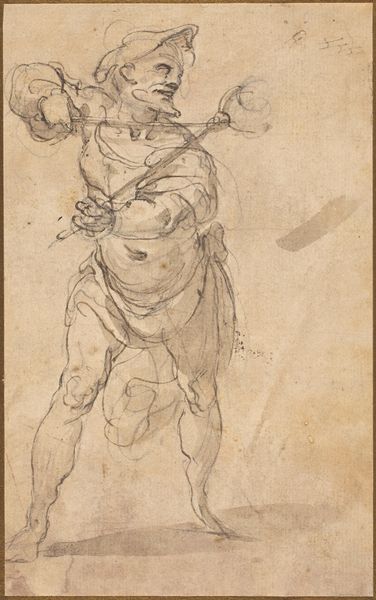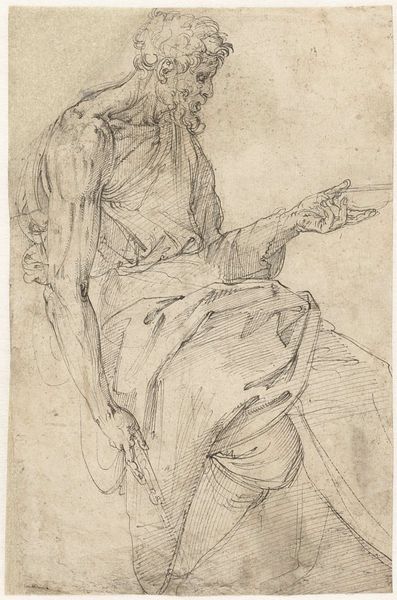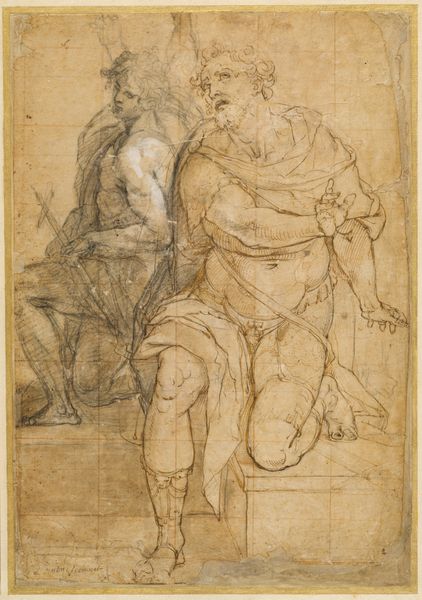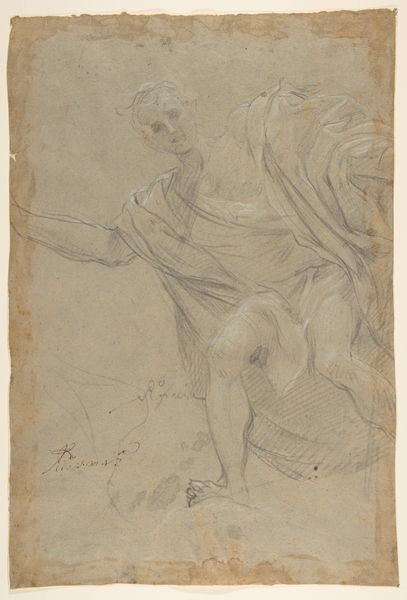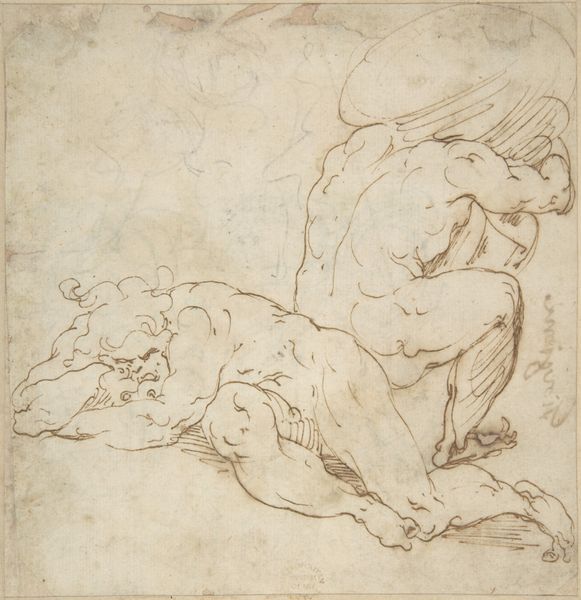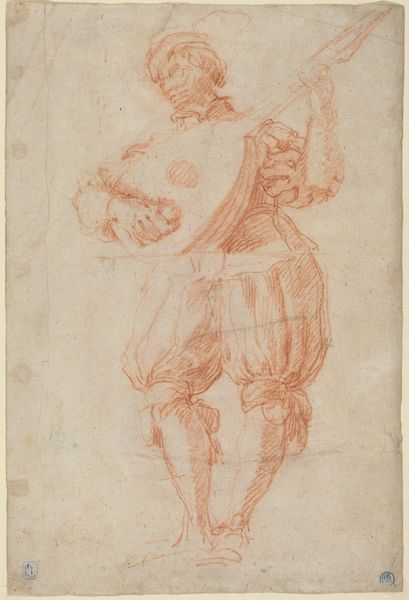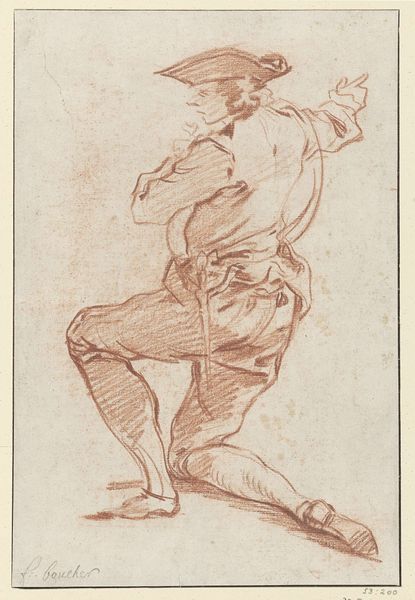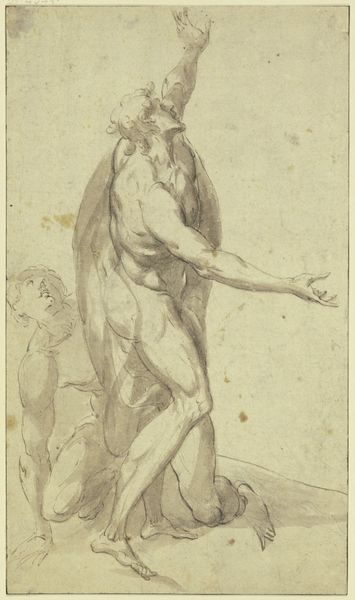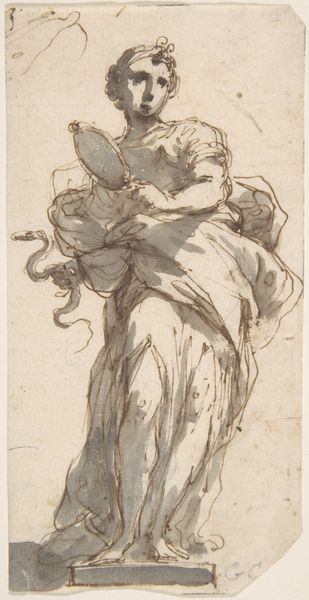
drawing, paper, ink
#
portrait
#
drawing
#
figuration
#
paper
#
ink
#
italian-renaissance
Dimensions: 11 15/16 x 8 1/4 in. (30.3 x 21 cm)
Copyright: Public Domain
Curator: At the Metropolitan Museum of Art, we have "Male Figure Seen from Behind", a drawing crafted in ink on paper between 1600 and 1613, attributed to Alessandro Maganza, an artist active during the Italian Renaissance. What are your initial thoughts? Editor: Striking. There's a vulnerability in showing only the figure's back, and yet the musculature and posture suggest immense strength. It evokes a sense of both power and uncertainty. Curator: It's important to contextualize drawings like this within the artistic practices of the time. Often, they served as studies, preliminary explorations for larger paintings or sculptures. How do you think that context shapes our understanding? Editor: It raises questions. Who was this man? What role might he have played in a larger composition? The very act of viewing this unfinished study pushes me to consider his identity, his story within the socio-political forces. Curator: Maganza operated within the cultural milieu of late Renaissance Italy. Think about the role of the male nude in academic training and the broader construction of masculinity. This sketch participates in and also, perhaps, slightly deviates from those norms. The dynamism hints at a narrative. Editor: Exactly. The figure’s stance suggests he is burdened, either literally or metaphorically. Looking at the curves of his spine, the tension in his neck...I see more than just an idealized form; I perceive a man facing a challenge, his internal world etched onto his physical being. Curator: Consider also that drawings of this era circulated within specific artistic and intellectual circles, informing the production of later works. The drawing might well have exerted an impact beyond the artist’s immediate sphere. Editor: I appreciate the artist's focus on anatomy and movement. It invites contemplation on the lived experience, not just in the 17th century but in the present as well, and it challenges the continued legacies of these works. Curator: Well said. It highlights the continued conversation, between past artistic traditions and the urgent conversations that continue in art today. Editor: Absolutely, these visual echoes continue to shape who we are and how we perceive each other.
Comments
No comments
Be the first to comment and join the conversation on the ultimate creative platform.
